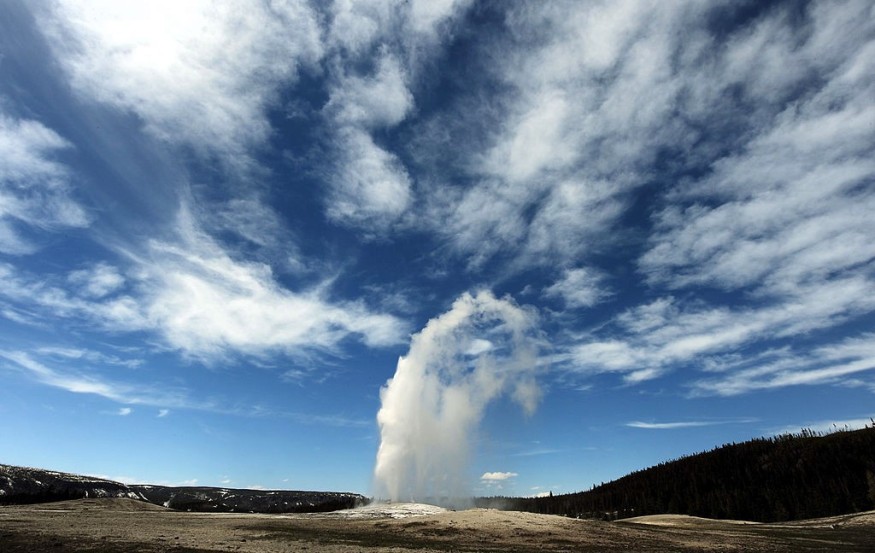
Heat-loving microbes thrive in the high-temperature (about 195F) water of Yellowstone National Park's iconic geyser Old Faithful.
Heat-Loving Microbes in Hot Geyser Water
In Yellowstone National Park, a renowned hub of North American wildlife, researchers uncovered an astonishing array of microbial life. Renowned for its abundant mammals, including native bison and restored gray wolf populations, the park's mountains, forests, and meadows attract millions of visitors eager to catch a glimpse of its diverse wildlife.
Yet, beyond the charismatic mammals and birds, Yellowstone's hydrothermal springs, pools, and geysers, with their steaming, bubbling waters, serve as unique habitats for heat-loving microbes. While scientists have long investigated the hydrology of these features, the microbiology of Yellowstone's geysers remained uncharted territory.
Scientists have discovered a diverse collection of chaos-loving microbes in the boiling, sulfurous waters of Old Faithful https://t.co/J2jOGH9uu4
— NYT Science (@NYTScience) October 28, 2023
Eric Boyd, a microbiology professor at Montana State University, emphasized the lack of prior research into the microbiological world of the park's geysers, marking a significant step toward understanding the full extent of life thriving in this iconic American natural wonder.
Microbes in Old Faithful in Yellowstone
Geysers, like the famous Old Faithful in Yellowstone, erupt unpredictably, shooting scalding water into the air, making it seem inhospitable to life. However, recent research presented at the Geological Society of America meeting by Boyd and colleagues challenges this notion. They collected falling water during Old Faithful's eruption, revealing microscopic life thriving in the geysers.
Using a chemical that made these tiny microbes fluoresce, they confirmed the presence of living cells. They had to eliminate the possibility of contamination, as they were collecting airborne water. This discovery sheds light on the remarkable adaptability of life forms in extreme environments like Yellowstone's geysers.
DNA Analysis of Water From Old Geyser
Using DNA testing, the research team identified microorganisms inhabiting the geyser's vents and pools. Over 60% of the microbes at Old Faithful were Thermocrinis bacteria, which thrive in high temperatures and convert chemicals into energy. Other heat-loving microorganism genera like Thermus and Pyrobaculum added to the geyser's microdiversity.
Alfonso Davila, a NASA Ames astrobiologist, commended the correlation of microorganism groups to various environmental conditions, highlighting the remarkable diversity within this relatively small geyser system.
The team proposed that Old Faithful's dynamic environment, rich in sulfur compounds, carbon, and steamy water, fosters this diversity. They observed that calm pools lacking turbulent eruptions exhibited lower population-level biodiversity, further supporting their hypothesis.
Boyd emphasized that while Old Faithful is a harsh and unfriendly environment, it paradoxically acts as a cradle for biodiversity. Even in the sulfurous, volcano-heated, carbon-dioxide-laden waters, Thermocrinis thrives, demonstrating the adaptability and resilience of life in extreme conditions.
Also Read : 'Disrespectful' Tourist in Yellowstone Filmed Dunking Hands in Hot Spring Despite Dangers
Implications of Heat-Loving Microbes in High-Temperature Water
The discovery of life in Old Faithful raises the question of life in geysers beyond Earth. Enceladus and Europa, with evidence of geysers, could provide conditions for thriving microbes. This finding aids astrobiologists in understanding extreme life. Life's ability to thrive on Earth in such conditions suggests potential in places like Enceladus, Europa, or even Mars.
While detecting extraterrestrial life may take time, Yellowstone, home to half of the world's 1,000 geysers, offers valuable insights. Boyd is confident that any geyser sampled on Earth will support microbial life, emphasizing the broader significance of this research in expanding the understanding of life's adaptability.
© 2025 NatureWorldNews.com All rights reserved. Do not reproduce without permission.





